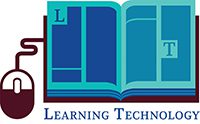
For a long, long time, colleges and universities have had it pretty darn good.
For centuries, they’ve cornered the market for higher education. Starting in medieval times and continuing through the age of the Internet, higher education has remained an enduring ticket to increased prosperity and opportunity.
 But even compared to that enviable record, universities have still had a remarkable past few decades. The post-World War II boom and programs like the GI Bill fueled a massive expansion of the college educated population. A growing economy and white collar jobs galore made a college degree the de facto prerequisite for entry to the middle class. Universities simply had to open their doors and the students came marching in.
But even compared to that enviable record, universities have still had a remarkable past few decades. The post-World War II boom and programs like the GI Bill fueled a massive expansion of the college educated population. A growing economy and white collar jobs galore made a college degree the de facto prerequisite for entry to the middle class. Universities simply had to open their doors and the students came marching in.
But recent developments make that primacy less durable. Cracks are showing in that long-lasting foundation. Corporate educators would be wise to pay attention.
To be sure, this isn’t the first time traditional universities have faced competition. The rise of for-profit educational institutions like the University of Phoenix and Devry offered affordable education for the masses. Abundant federal loans, convenient night and weekend class times and customizable curricula sealed the deal for many working students. As a result, for-profit education became a lucrative $35 billion market.
Unfortunately, suspect players entered the market, too. So-called diploma mills promised low-income, nontraditional students a degree in a hurry and guaranteed job placement after graduation. Crippling student debt and jobless former students prompted a wave of lawsuits and federal scrutiny that shut down the worst offenders and tarnished the reputation of the survivors.
Through it all, traditional colleges continued to thrive despite the for-profit intrusion. Tuition ballooned nearly 260 percent from 1980 to 2015, with the average cost of tuition, room and board running in excess of $25,000. Enrollments, endowments and budgets never looked better.
That doesn’t mean that all is well in academia. Skyrocketing costs and stale curricula and methods are pushing some to reconsider the college path. Some enterprising young folks are even skipping higher education altogether, encouraged by people like Silicon Valley financier Peter Thiel whose self-titled fellowship promises young entrepreneurs a cool $100,000 if they bypass the classroom and start a business.
It’s not just West Coast tech types who are looking for another way. Corporate bosses tired of seeing graduates unprepared for the world of work and lacking critical thinking and communication skills are taking matters into their own hands. In the U.K., accounting firm PwC plans to hire 160 dropouts to take part in a two-year apprenticeship program. Complete it successfully and they’ll earn the right to join the company on equal footing with an expensively educated college grad.
This time, the disruption has a chance to finally crack the mold. Corporate educators find themselves in an enviable position. Long held to a high standard and required to demonstrate a return for spending, corporate universities and learning departments operate with an efficiency you’d be hard pressed to find in traditional education.
They’ve invested in technology to flip the traditional model of education, taking rote learning and basic content out of the classroom and putting it online where it’s accessible 24/7. CLOs have stripped away the excess and created compelling and highly targeted learning experiences that appease skeptical bosses and make the most of busy workers’ time.
But what comes next is an open debate. Facing this second round of disruption, universities are starting to tinker with change. Taking a cue from their corporate peers, some are using “flipped learning” and doing away with lectures. Rather, time together is spent working on complex projects and dealing with real-world challenges.
As universities slowly turn the ship and more students graduate with the problem-solving and communication skills needed in the 21st century, learning departments will have to evolve once again. Some already have, focusing less on teaching and knowledge transfer and more on collaboration, connection and curation.
For CLOs, continued innovation should be no problem. After all, they’ve never had the luxury of a centuries-old model to rely on.
Mike Prokopeak is the Chief Learning Officer editor in chief. Comment below or email mikep@CLOmedia.com.















